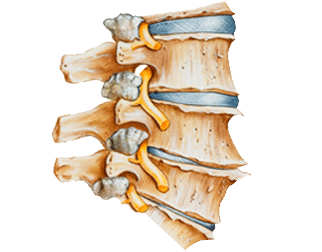What is Degenerative Disc Disease?
 Degenerative Disc Disease occurs in many people during the normal aging process. And it is also called “arthritis of the back.”
Degenerative Disc Disease occurs in many people during the normal aging process. And it is also called “arthritis of the back.”
With age, the discs or “shock absorbers” located between the vertebral bodies lose their elasticity. And may cause one vertebral body to collapse down onto another. This collapsed body may compress nerve roots or the spinal cord. Thus, causing back and or leg pain.
Symptoms of the Disease
- Aching lower back pain
- Back stiffness
- Radiating pain descending into the legs
- The pain usually worsened with activity or prolonged sitting or standing
Causes of the Degenerative Disc Disease
- The changes in discs as you age
- Trauma (injury)
- Repetitive lifting
- Smoking, obesity, and hereditary factors also lead to advanced degeneration
Degenerative Disc Disease Treatment Options
Non-surgical options
When treating Degenerative Disc Disease, conservative treatment options are always first considered. These methods include medications, physical therapy, or spinal cortisone injections. Then surgery becomes an option for those patient who do not show improvement.
Surgical Options
The most common surgical options to treat Degenerative Disc Disease include the following:
Decompression
This surgical procedure involves removing all or portions of the lamina, removing bone spurs, and then enlarging foramina to relieve pressure or compression on the nerve roots or spinal cord. This pressure is often the cause of pain.
Decompression & Posterolateral Fusion
Often times, in addition to a decompression, your surgeon will perform an instrumented posterolateral fusion by inserting a series of screws and rods coupled with the placement of the bone graft. This fusion provides increased spinal stability.
Anterior Lumbar Interbody Fusion (ALIF)
The surgical approach is from the front of the abdomen. Then, the disc material causing the nerve compression is removed. An interbody cage or bone spacer is placed at the disc site, and is filled with a bone graft. Then, the vertebral bodies above and below are frequently put under compression. And this is done to aid in the subsequent spinal fusion.
Posterior Transforaminal Interbody Fusion
The same procedure as the ALIF but the approach and exposure are performed from the back. Just as in an ALIF, the disc material is removed. Then, an interbody device is inserted. Compression through the use of pedicle screws is frequently achieved to aid in fusion.
Disc Replacement
Removal of the spinal disc and replacement with an artificial prosthesis.
For more information, please consult one of our spine specialists by calling at 888-409-8006.
